The next stop on our side trip to Jordan was Petra--the main reason for going. It did not disappoint us.
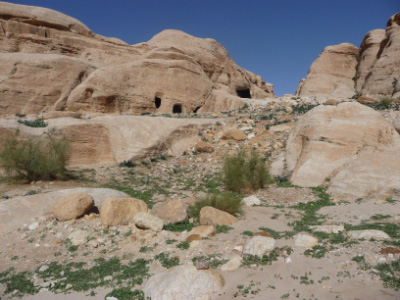 |
|
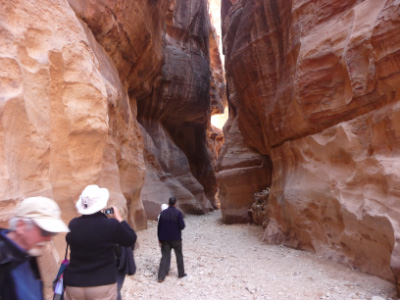 |
When you enter Petra it looks like a typical middle eastern landscape, with rocks, scrub vegetation, and the occasional hole indicating a tomb.
|
|
Once you are inside, though, it is amazing. The town is entered though a series of narrow, wildly-colored canyons. In places along the canyons elaborate tombs have been cut into the living rock.
|
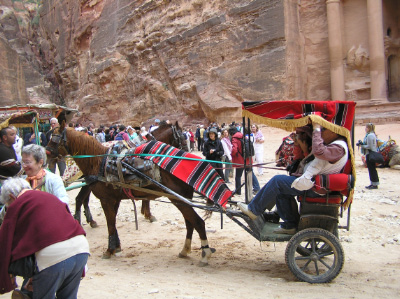 |
|
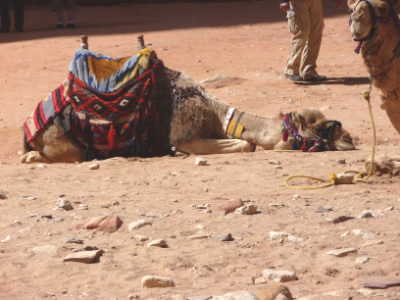 |
Since it is a fairly long walk, there are alternate means of transportation. These horse carts are very popular, although at the end of the day, when they are hurrying to transport visitors to and from the entrance, they are a real menace on the narrow footpath.
|
|
You also have the option to ride a camel, although this one seemed disinclined to get up and go to work today.
|
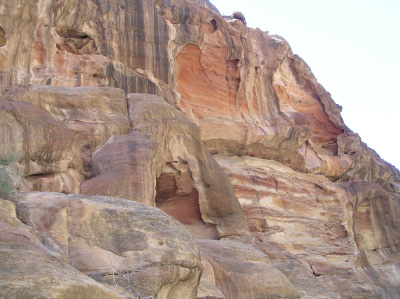 |
|
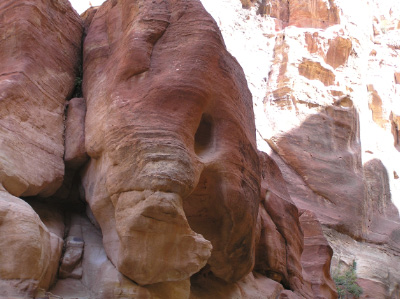 |
The walls of the canyons are striped in brilliant colors of red, yellow, gray, and brown.
|
|
"Elephant Rock"--easy to see why.
|
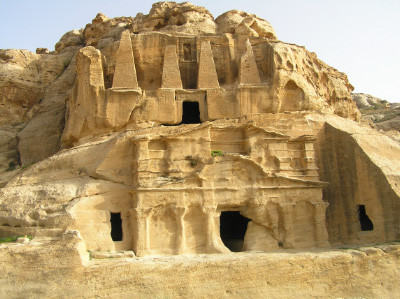 |
|
 |
The colors of the rocks change with the light. In the morning many of the tombs, like the Obelisk Tomb here, appeared mostly yellow and white.
|
|
By afternoon the dominant color was the rose-red for which the city is best known.
|
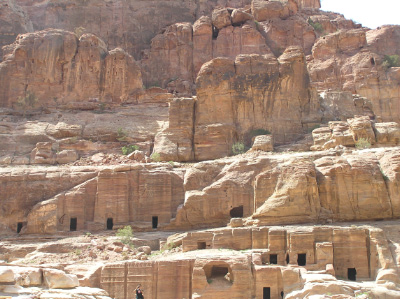 |
|
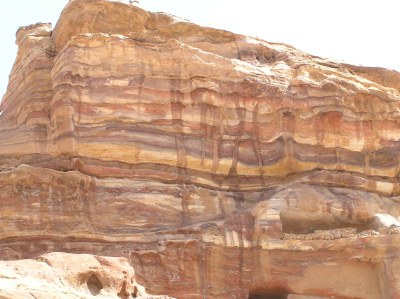 |
While many of the tombs are elaborately carved, some are more modest, although the facades are still smooth and finished.
|
|
The colors in the rocks sometimes looked like colored icing dripping over a cake--here are colors of yellow, red, and purple.
|
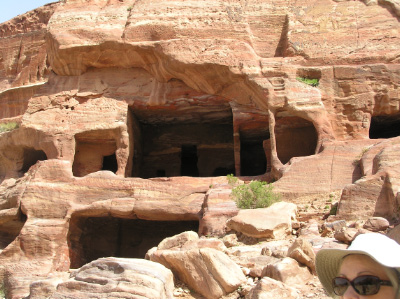 |
|
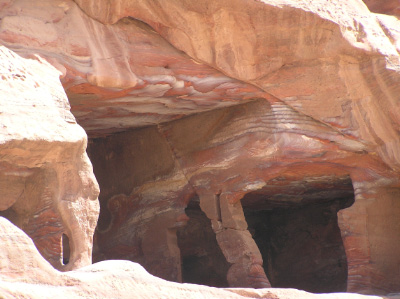 |
Some of the tombs were later repurposed as homes, especially by the Bedouin. In theory these nomads have been resettled into town, but they still wander around Petra, (illegally) selling souvenirs to the tourists.
|
|
How much would we pay for a paint job around our front door that looked as stunning as the natural colors of this rock ledge?
|
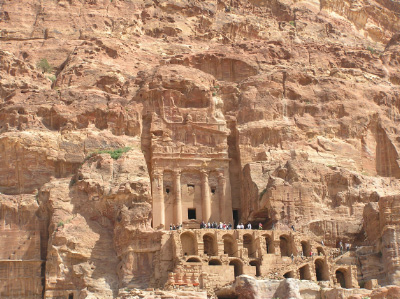 |
|
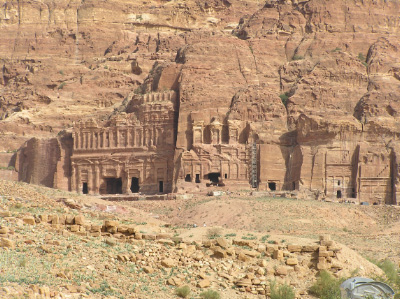 |
The Urn Tomb also served as a church in the fifth century AD.
|
|
The "Royal Tombs" overlooked the main street of the town.
|
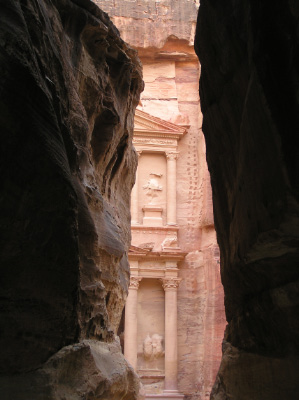 |
|
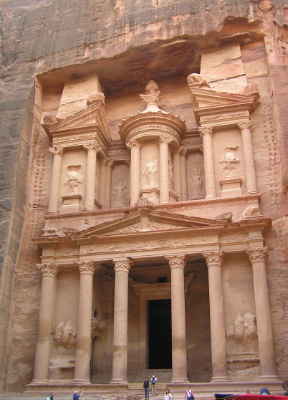 |
The most famous facade in Petra is first seen through a narrow window in the canyon.
|
|
When you step out of the canyon into a large open area you see the Treasury--so-called because early treasure-hunting archaeologists believed that there was gold hidden in the containers in the facade. Carved out of solid rock, it is a breathtaking sight.
|
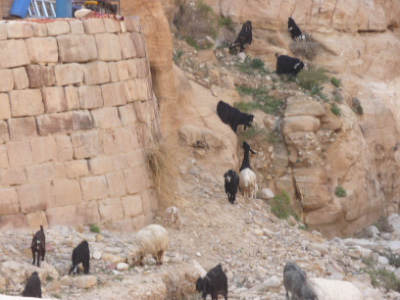 |
|
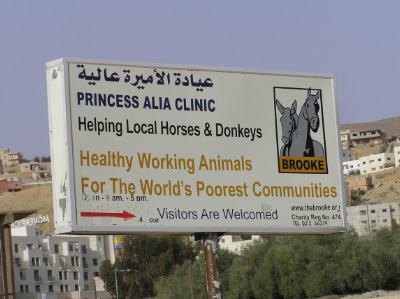 |
While Petra is the major tourist attraction in Jordan, it is still in the middle of a pastoral nation and livestock--goats, in this case--wander through on occasion.
|
|
With the all visitors to Petra, there are lots of horses, donkeys, and camels to transport them. Charities attempt to ensure that the animals are not mistreated.
|
We also had one of the most interesting meals of the trip at Petra. Most the meals on the trip were the same: pita bread with dips, grilled skewers of meat and rice. The one at Petra Kitchen was the usual menu, but this time we made it ourselves; the restaurant divided us into small teams and each team prepared a different dish. We were on the baba ganoush team--it came out pretty well.
|
























